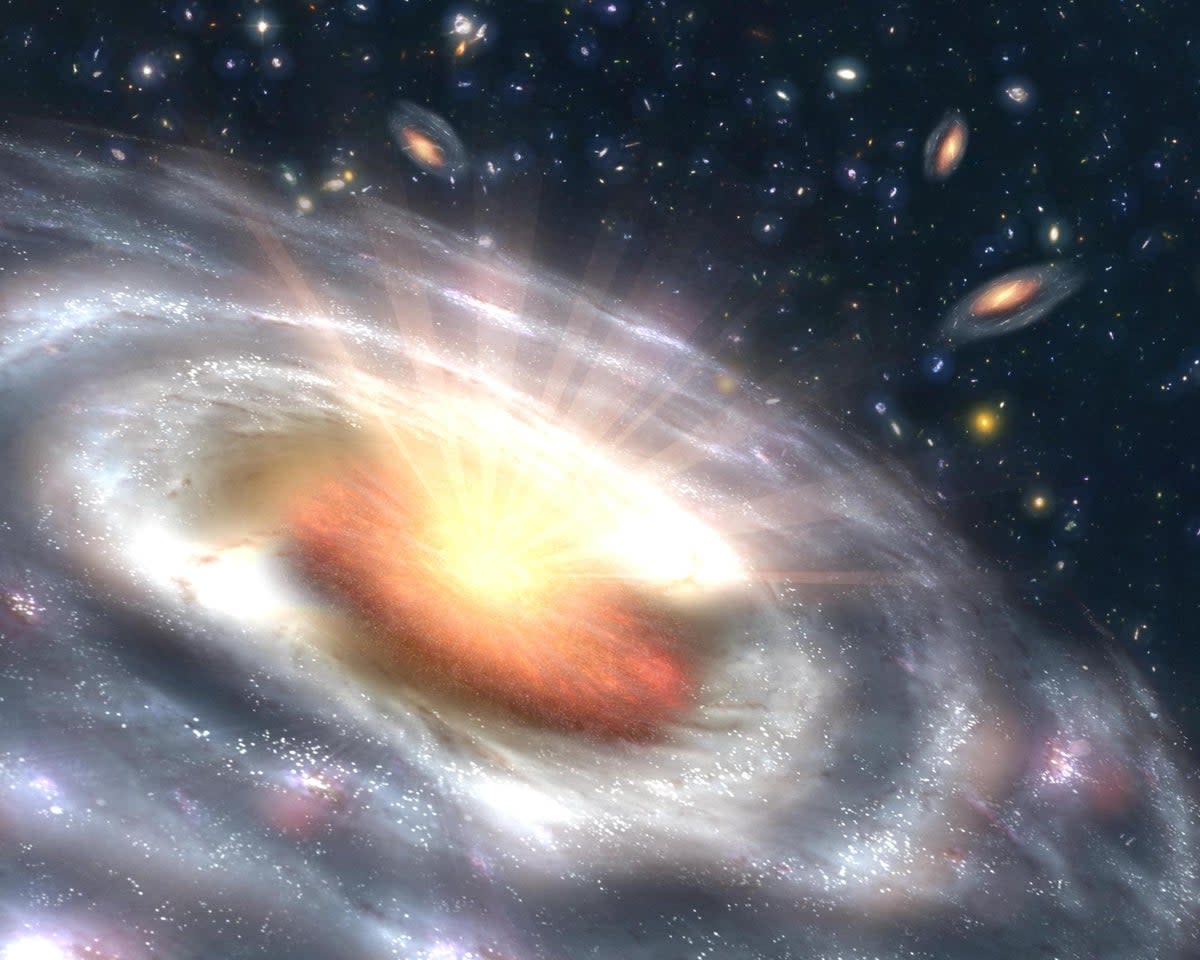Nasa’s Webb telescope uncovers ‘hard to find’ cosmic knot of galaxies: ‘An exciting result’

When astronomers pointed the James Webb Space Telescope at an extremely distant and bright galaxy, they expected to find some hidden companion galaxy to explain the bright galaxy’s strange behavior.
Instead, they found at least three new galaxies, all circling close to the original target galaxy at extremely high speed — the beginnings of a galaxy cluster as it existed 11.5 billion years ago, just more than two billion years after the big bang.
“There are few galaxy protoclusters known at this early time. It’s hard to find them, and very few have had time to form since the big bang,” astronomer Dominika Wylezalek of Heidelberg University in Germany, who led the study with Webb, said in a statement. “This may eventually help us understand how galaxies in dense environments evolve. It’s an exciting result.”
The initial target of the study was SDSS J165202.64+172852.3, a galaxy with a very active and bright core due to the feeding of a supermassive black hole in its heart. Known as quasars, such galaxies are thought to expel large amounts of matter, and these outflows, scientists have theorized, could influence the formation of other stars and galaxies.
Scientists had observed SDSS J165202.64+172852.3 with the Hubble Space Telescope, but the Quasar is so distant, its light has been shifted into extremely red wavelengths -- the expansion of the universe during the time the light waves traveled across the cosmos stretching the wavelengths until they are most infrared. While Hubble has some sensitivity to the infrared spectrum of light, the Webb telescope was built specifically for sensitivity to just these wavelengths of light. That sensitivity, coupled with Webb’s record breaking 21.6 foot diameter mirror, allowed Dr Wylezalek and her colleagues to see what Hubble could not.
The researchers used Webb’s near infrared spectrometery instrument to map the motion of the galaxies surrounding the quasar, as well as the outflows of material from the quasar.
Knot your average discovery 🥨
We thought there was just one, but Webb revealed there are at least 3 galaxies forming a cosmic knot around this quasar. A quasar is a super bright galactic core, powered by a supermassive black hole. https://t.co/wiFgbPw7dR
Let's untangle this👇 pic.twitter.com/yfkq4MRB2n— NASA Hallo-Webb Telescope 🕸🕷🎃 (@NASAWebb) October 20, 2022
They found the galaxies are all closely interacting, hinting at the presence of a lot of gravity-generating mass that remains unseen. It could turn out to be one of the most massive regions of galaxy formation in the early universe.
The candidates for such a hidden massive influence are largely limited to huge amounts of dark matter, the mysterious form of matter that is invisible and non-reactive with normal matter, except for its gravitational influence. It’s believed that halos of dark matter surround galaxies and galaxy clusters, and play a role in those objects condensing out of primordial gas clouds in the early universe.
“Even a dense knot of dark matter isn’t sufficient to explain it,” Dr Wylezalek said. “We think we could be seeing a region where two massive halos of dark matter are merging together.”
Her team is already planning follow up observations to better understand the quasar, the protogalaxy cluster, and their relationship with dark matter.

